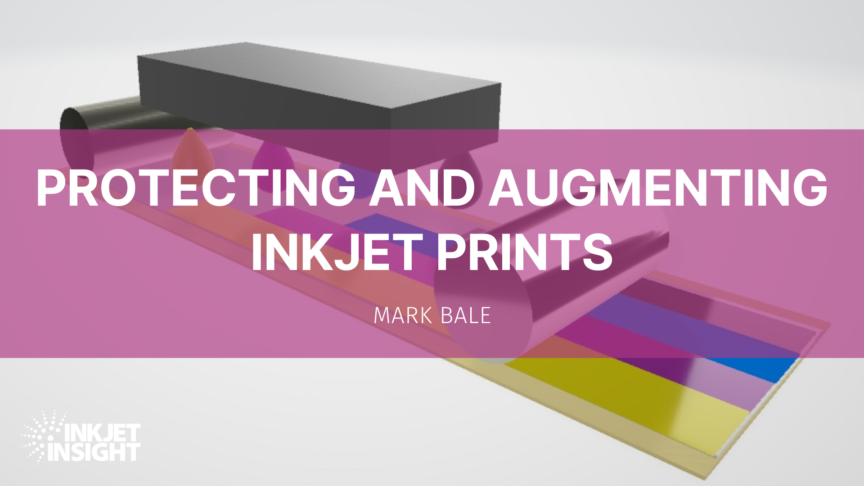Inkjet printing when applied to the graphics arts creates immense value for shorts runs, versioning and personalisation, but in some markets the value proposition can be sensitive to pricing. It has become popular practice to combine digital and analog deposition to create hybrid processes, both in terms of surface pre-treatment (priming) and protection (varnishing). In this technical article we look at some of the chemistry benefits & challenges associated to overcoating inkjet to expand the end-use performance of inkjet products.
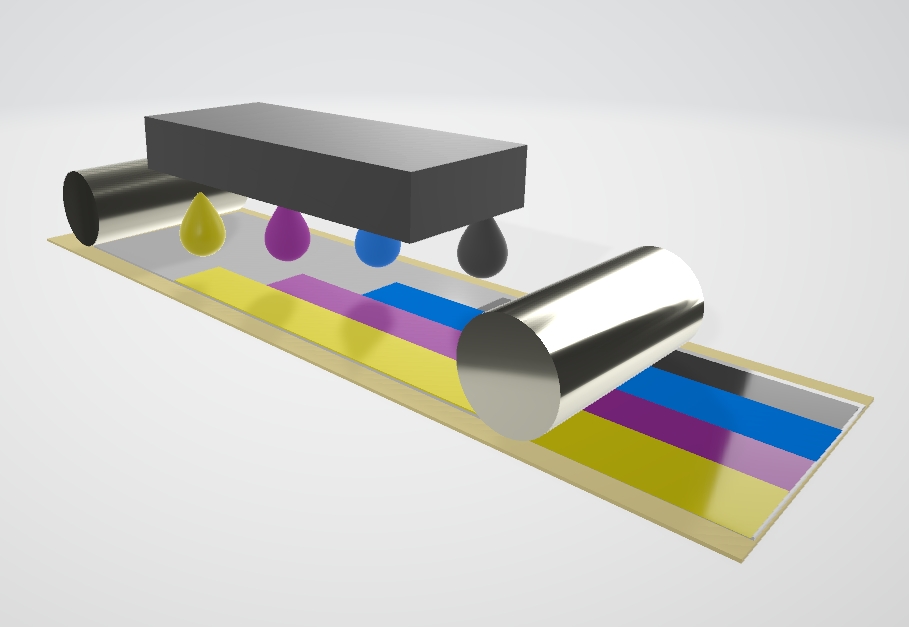
Printing to paper still constitutes the largest volume of inkjet ink consumption, with commercial printing being a major fraction of this. Price per page is an important metric and so there are benefits to simplifying the ink chemistry being used and relying on cheaper analog approaches to close the gap. This can involve either over-print varnishes (OPVs) or lamination, both of which are also applied to industrial packaging applications such as labels and corrugated, which we discussed in previous articles in 2021.
Advantages versus Challenges
It is often difficult to put all the required performance for end-use application into a single formulated product and this is no less true of inkjet inks. As a result, specific requirements like rub resistance or slip are provided by separate coatings that can be selectively patterned to offer matt/gloss highlight effects. The photos below are taken from laboratory coating experiments on paper with both water-based on UV varnishes over different inkjet inks (by drawdown method). The benefit to gloss, color and graininess can be discerned.
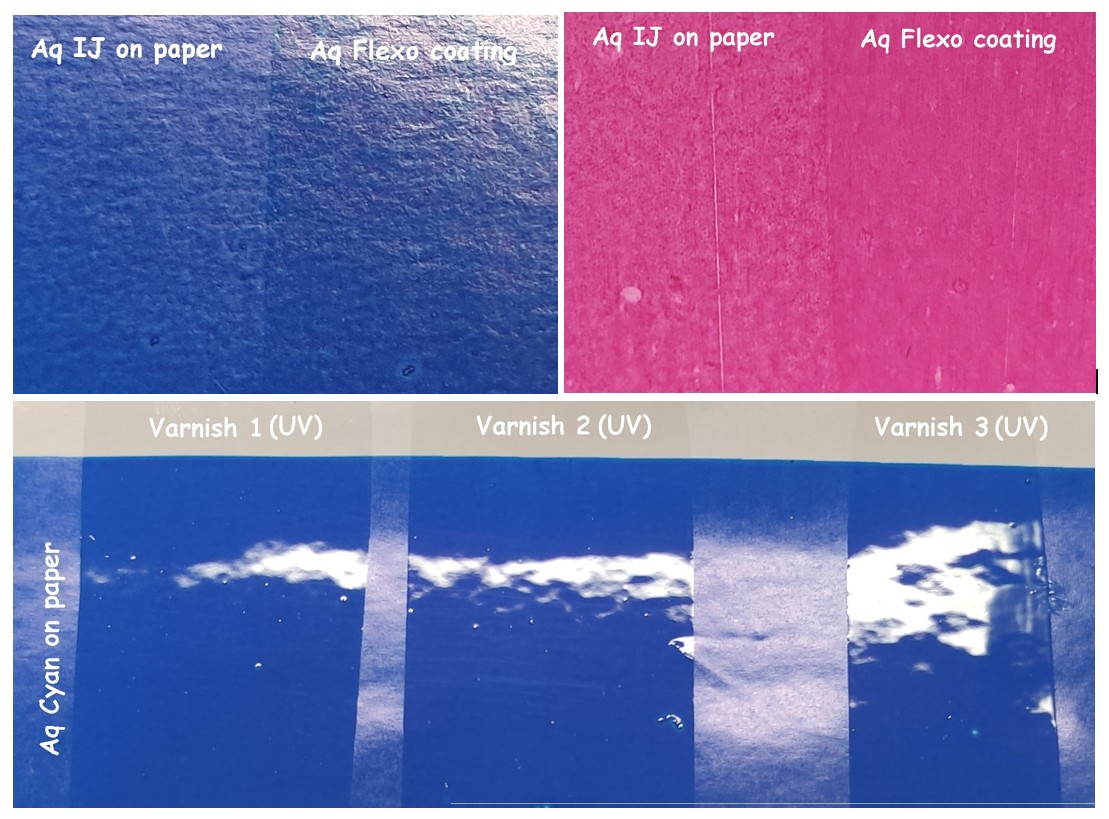
The main challenge with overcoating inkjet is that recipes used in single pass printers tend to be formulated with higher levels of powerful surfactants, leading to surface tensions lower than those typically found in analog formulations. As we discussed way back in our posts on this topic, the extra spreading is needed to deliver uniform coating through droplet merging and coalescence. The following image is taken from our previous article on jetting and wetting in single pass printing.
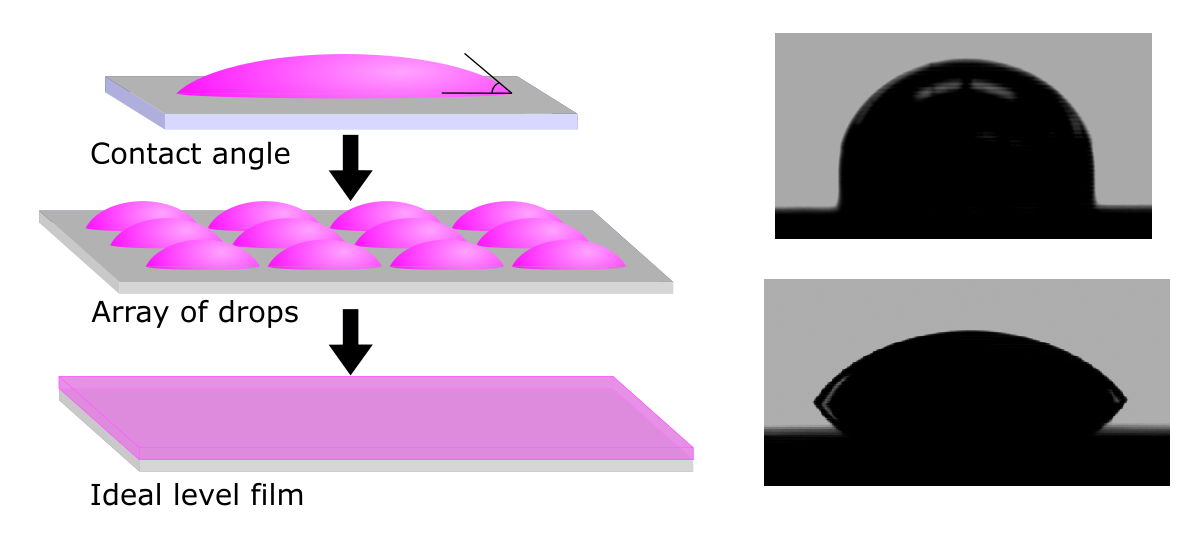
The knock-on effect of this additive chemistry is to create a trickier surface on which to wet with the next layer. Despite the impression provided by the print blanket, which can force ink coverage, the ink can subsequently reticulate, leading to pinholes or worse.
Such effects were also experienced in toner-based printing processes that preceded production inkjet machines, especially when printing inline. The most obvious solution is to include an even more powerful additive in the coating, thus reducing the surface tension to be comparable to the dried ink surface energy. In one patent on the topic (US7939176), Xerox disclosed that up to 3-5% of wetting aids in UV-curable formulations. This is not without its own problems since such high levels of additive tends to result in foaming. However, it has long been common practice to include additional defoaming additives to flexo and gravure inks to control such behaviour. The photos below show how three different UV clear varnishes react on three different cyan inkjet inks. The third coating performs well on all three inkjet inks, but the first one is ink dependent.
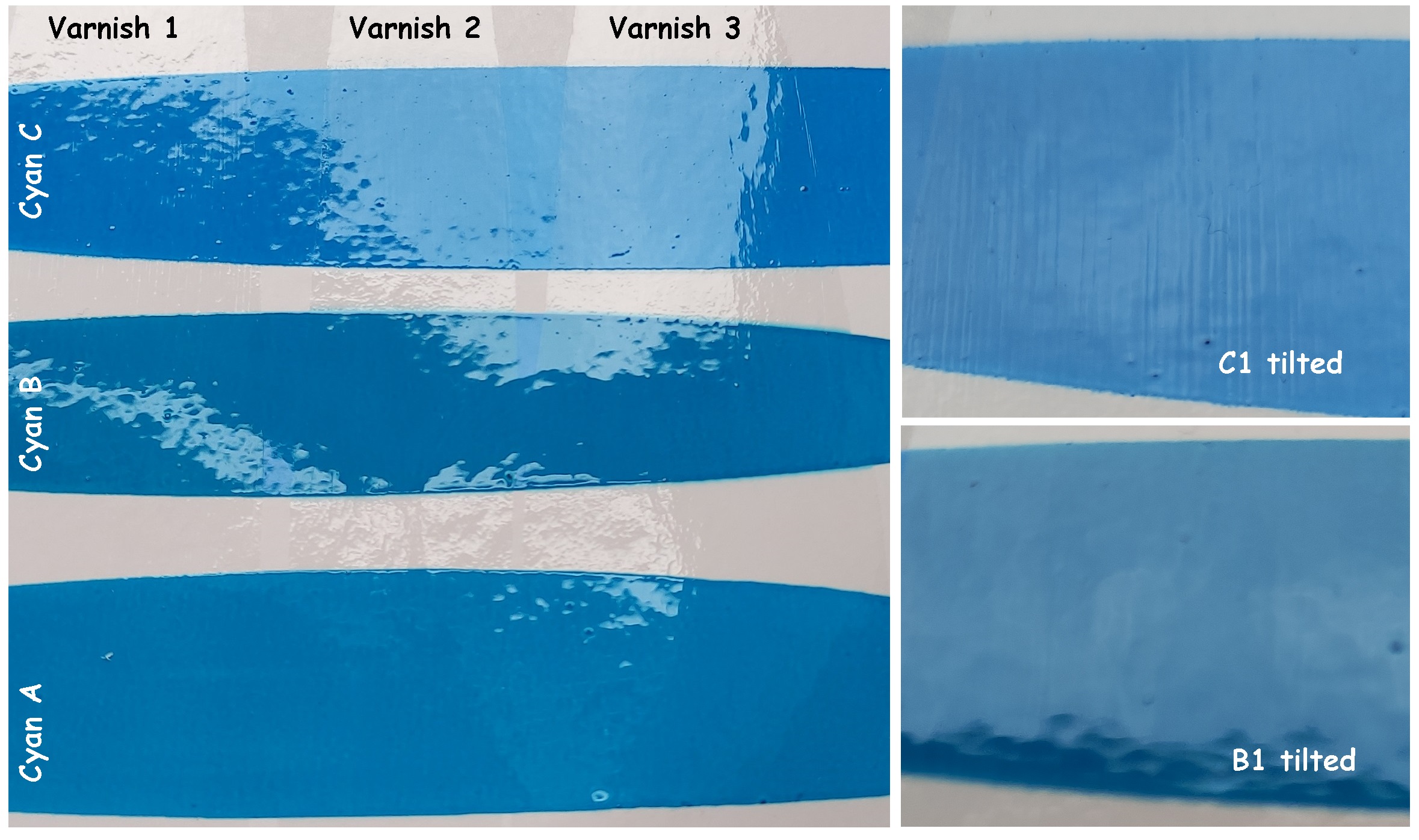
Wetting and adhesion often go hand-in-hand so the same high levels of additives can also have a deleterious effect on ink-ink behavior and even over-laminate bonding strengths, even when the coatings look uniform. Any combination therefore must be tested sufficiently in this respect.
Inkjet Deposited Coatings
Inkjet decoration of analog prints has been an area of continued growth since the early 2010s, most often the jetted materials are UV-curable and are being applied to commercial offset prints. MGI has been a leader in this field, but Scodix have also built a strong reputation. Achieving glossy layers in single-pass is relatively easy, and many of the additive approaches already discussed can work well for ink-jetted OPVs. Creating matte coatings is more difficult since the typical physical matting agents are micronized waxes that are not so compatible with the tiny inkjet nozzles.
To overcome this limitation, it is possible to control the UV dot coverage to be less than 100% and thus creating a less glossy appearance. Upon close inspection the layer can look a bit like the pink hemispheres in our second schematic, above. This approach was popular in label printers for a while, but the extra row of print heads was not always justified by the number of labels using such effects. To achieve matte and gloss with the same ink there are some nice patents making clever use of existing materials to modify the matte/gloss appearance using additives whose solubility changes with temperature during the curing process.
Most recently, over the last 5 years specifically, many newer inkjet printers for commercial market are being equipped with inline varnish that is jetted, thus removing the need for post-coating. This allows for the chemistry to be uniquely tailored to improve the overall performance of the ink as a package. The Ricoh VC60000 is well-known for having implemented such a combination prior to the drying phase. In other cases, patents variously describe the ink as dried or part-dried before the varnish is deposited.
Industrial Markets
We have focussed our discussion mostly on production and paper-based packaging, but hybrid inkjet-analog processes can be found across all industrial applications, many of which have adopted UV inkjet technology for reliability reasons. Of these, the décor market we spoke about in January is one where preceding discussion applies, since hard coats and lamination are critical element to the functionality and performance of the manufactured parts.
So hopefully this introduction has given you an idea of the benefits and challenges of defining and using coatings for inkjet prints. In future articles we shall dig a little deeper into specific examples, and perhaps also add some inkjet printing tests rather than bar coatings to demonstrate with some real products.
Editor’s Note: If you are currently using a post-coating system with your inkjet press (inline or offline) please take 5 minutes or less to complete this survey.

